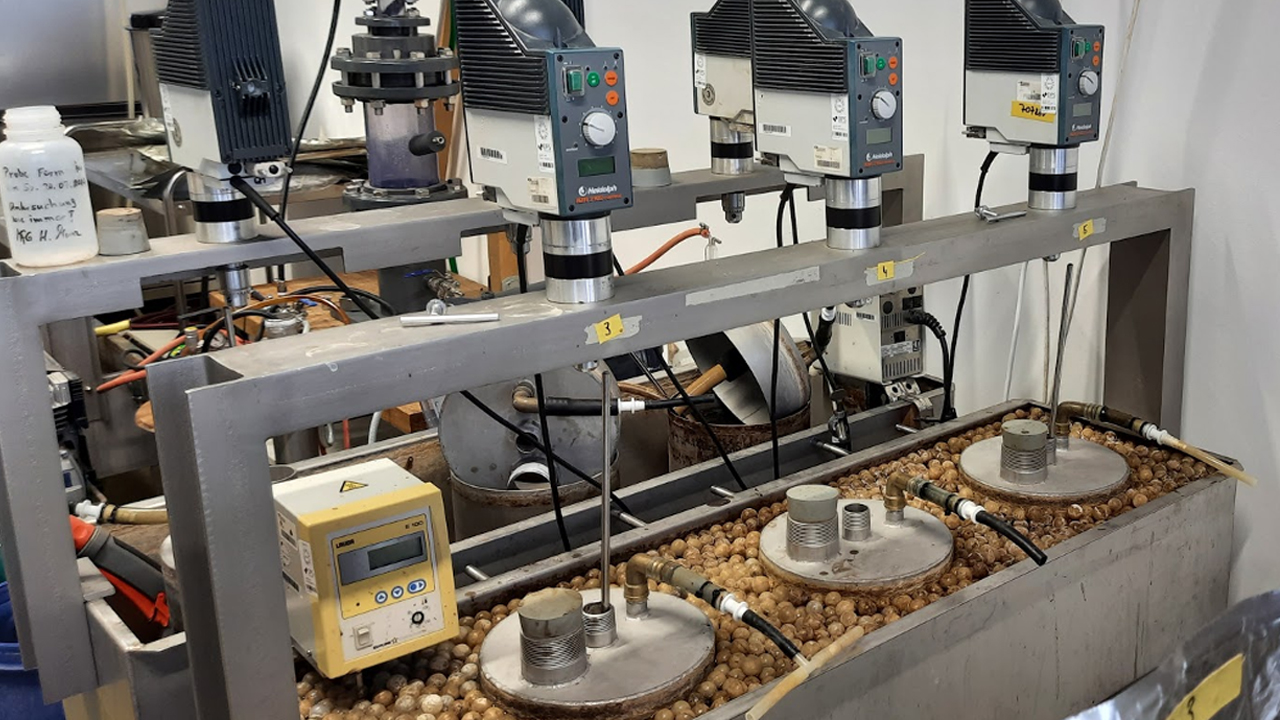Case Study
Algae for wastewater treatment
March 2022

- Hei-TORQUE
- Algae
- Biology
- Biotechnology
- Microbiology
- Stirring
- Wastewater treatment
- Water management
Wastewater is contaminated with phosphates due to the excretion of humans and animals, as well as residues from fertilizers and cleaning agents. These act as fertilizers in bodies of water and are mainly responsible for so-called eutrophication, the unnatural accumulation of nutrients. The oversupply leads to harmful growth of plants and algae in polluted waters. The removal of phosphates is therefore a central step in wastewater treatment.
The elimination of phosphorus in wastewater treatment plants is usually done chemically through what is known as phosphate precipitation. For this purpose, metal salts are added to the wastewater, which bind the dissolved phosphates and precipitate as insoluble substances. The sedimented compounds can then be separated. Since the precipitants used are often by-products or waste products from industrial processes, they can be contaminated with heavy metals that accumulate in the sewage sludge, which is undesirable.
An alternative to chemical phosphate precipitation can be biological processes such as the use of algae. Algae have the advantage that they absorb the phosphates as nutrients and metabolize them for their growth. Instead of sedimented metal phosphates, biological phosphate elimination creates biomass, which can be separated in the end via the sewage sludge.
In the competence center for sustainable engineering and environmental systems ZEuUS of the Technical University of Mittelhessen, Prof. Ulf Theilen and his working group are researching the potential of algae for wastewater treatment and the further use of the biomass resulting from this process. Two doctoral projects currently being performed by Ms. Tatjana Lorenz and Mr. Nils Hasport are investigating the use of algae for nutrient elimination and the material and energetic further use of the algae. The researchers see potential in reusing the resulting algae biomass as fertilizer or to generate biogas. Due to their rapid growth, the biogas potential of the algae roughly corresponds to that of maize, the substrate currently mainly used for biogas production.
To carry out the experiments to determine the biogas potential, 24 reactors on an 8 l scale with Heidolph laboratory stirrers (RZR 2102 control and 2041*, Fig. 1) are operated at the THM.
The cultivation of algae on a laboratory scale is also carried out using a Heidolph overhead stirrer: In so-called open pond systems, the natural flow of the water is simulated by means of a paddle that is driven by the agitator.
“We have been relying on the robustness of Heidolph devices for 30 years! They are in constant use with us!”, says Dipl. Ing. Hr. Luthard-Behle, laboratory engineer at ZEuUS.

